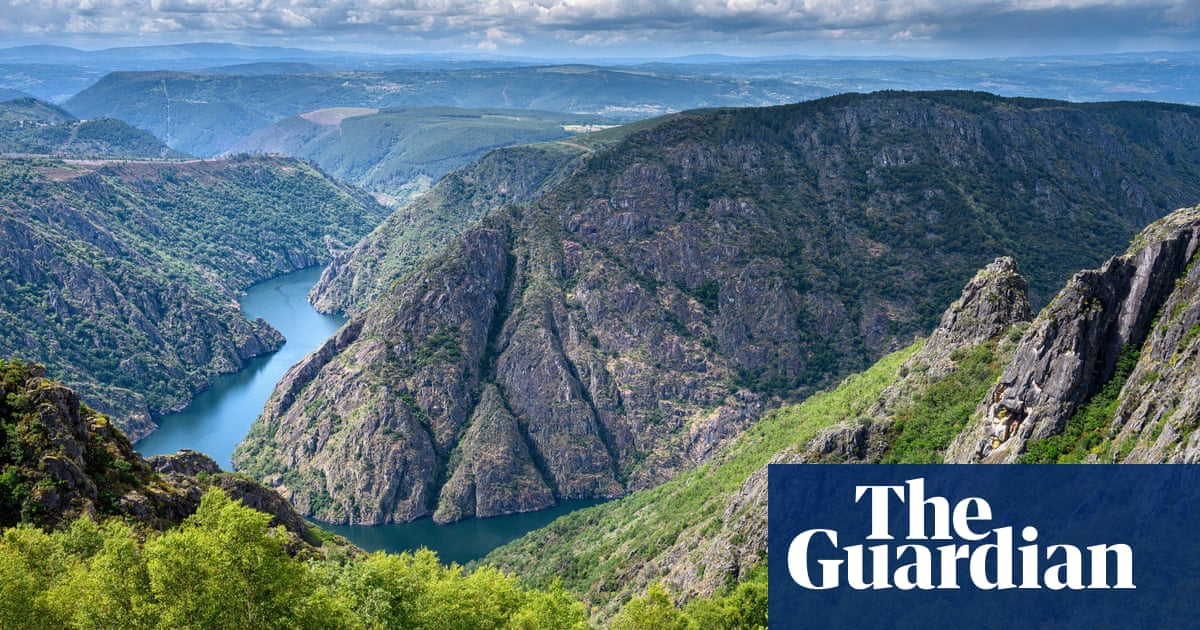Modes of transport always dictate the shape of the human landscape. When travel took to the rails in the 19th century, vast palaces of railway stations were built all over Europe. And now, on a train journey to Spain, I am passing through some of the best examples: in Paris, Barcelona and Madrid. In the latter, I have time to leave my bags at Chamartín station, actually a modern terminal, and dash off to see the Goya frescoes at the church of St Anthony, then nip back for the Renfe service to Ourense in Galicia.
My week-long hike is in a little-known part of Galicia close to the northern border of Portugal called the Ribeira Sacra, a region cut by deep river gorges. I arrive with my sister Jo after dark in the city of Ourense and take a taxi from the station up into the mountains. Our plan is to walk back to Ourense over the next five days. The taxi winds up the mountain, the headlights strafing deep forest and few houses. “It is very wild up here,” says the driver, “I’ve seen wolves on this road at night.”
We sleep in a room above the bar in the village of Parada de Sil and next morning begin to appreciate what is in store. The footpath skirts the rim of a deep river gorge, the early sun touching the forested crags on the far side and a few tiny terraces of vineyards. We meet no other walkers until the abandoned Santa Cristina monastery, where the path begins to meander through ancient groves of sweet chestnuts. Many of the stone-built villages look semi-abandoned.
In Castro we explore the narrow alleyways, finding strange wooden box structures perched on great legs of granite. Are they tombs? An old lady in a pink dressing gown appears, one of only five residents left. She laughs at my suggestion. “No, not tombs. They are hórreo, stores for the corn.”
“Where are all the people?”
She shrugs. “All gone. Some went to Argentina, Brazil and Venezuela. A few came back – like me. I left in the 1950s, but only as far as Madrid.”
The great exodus from Galicia and the Ribeira had started in the early 19th century, but accelerated in…
Click Here to Read the Full Original Article at Travel | The Guardian…
